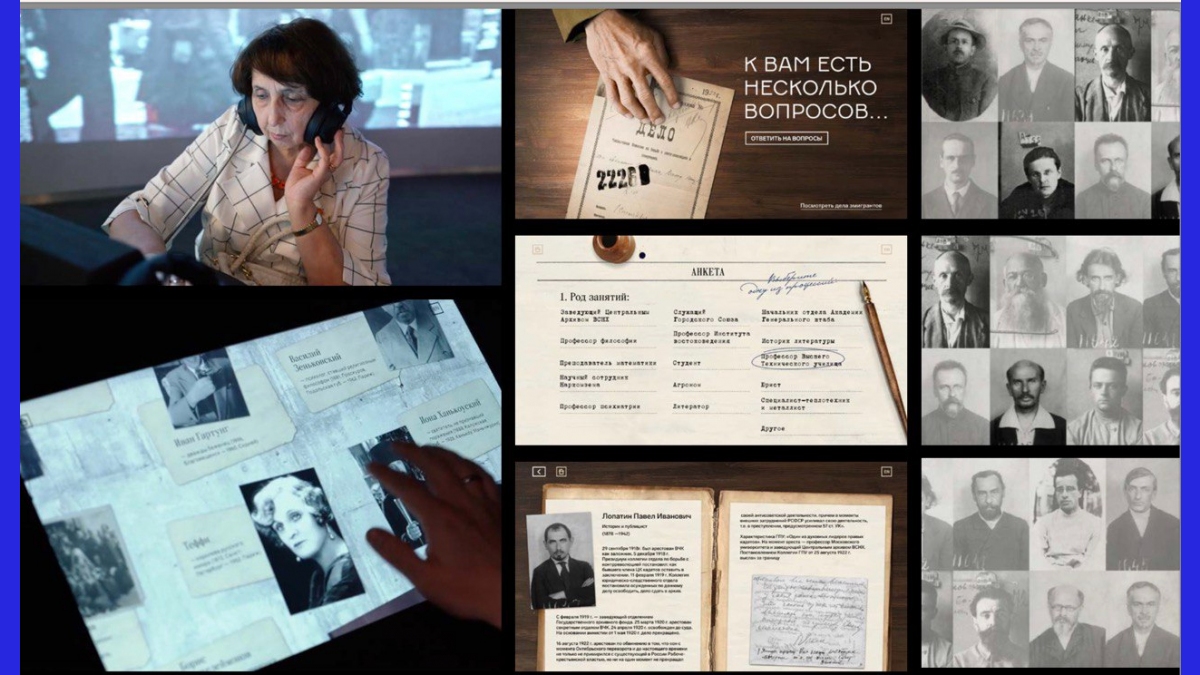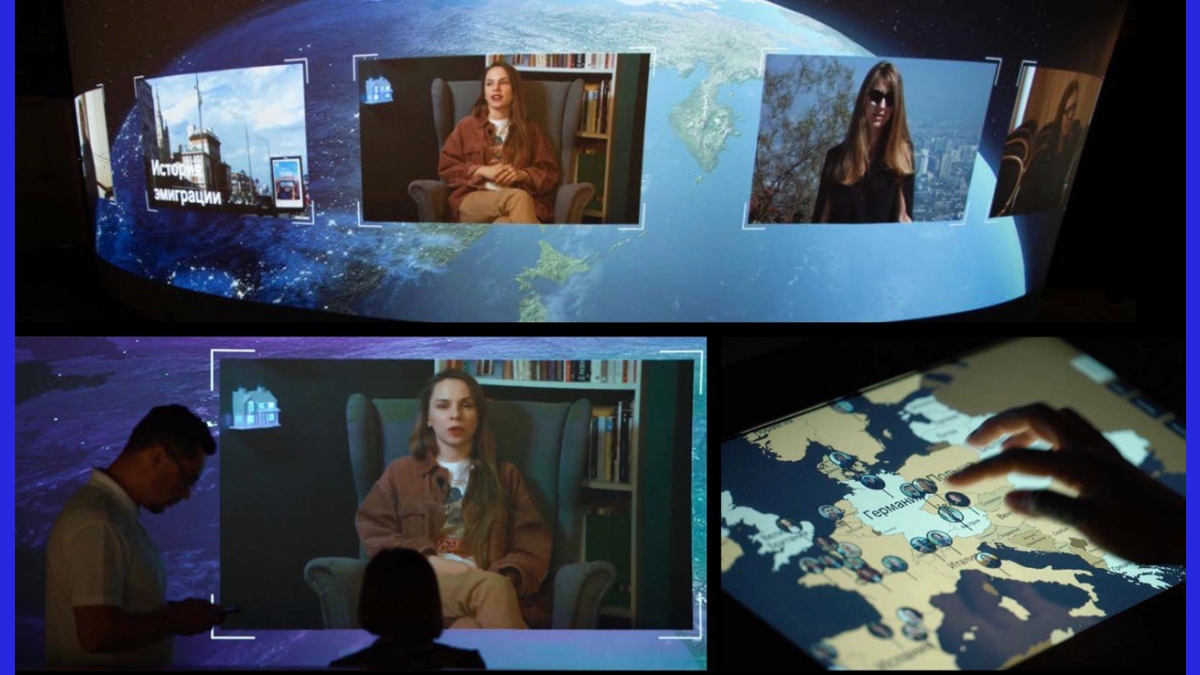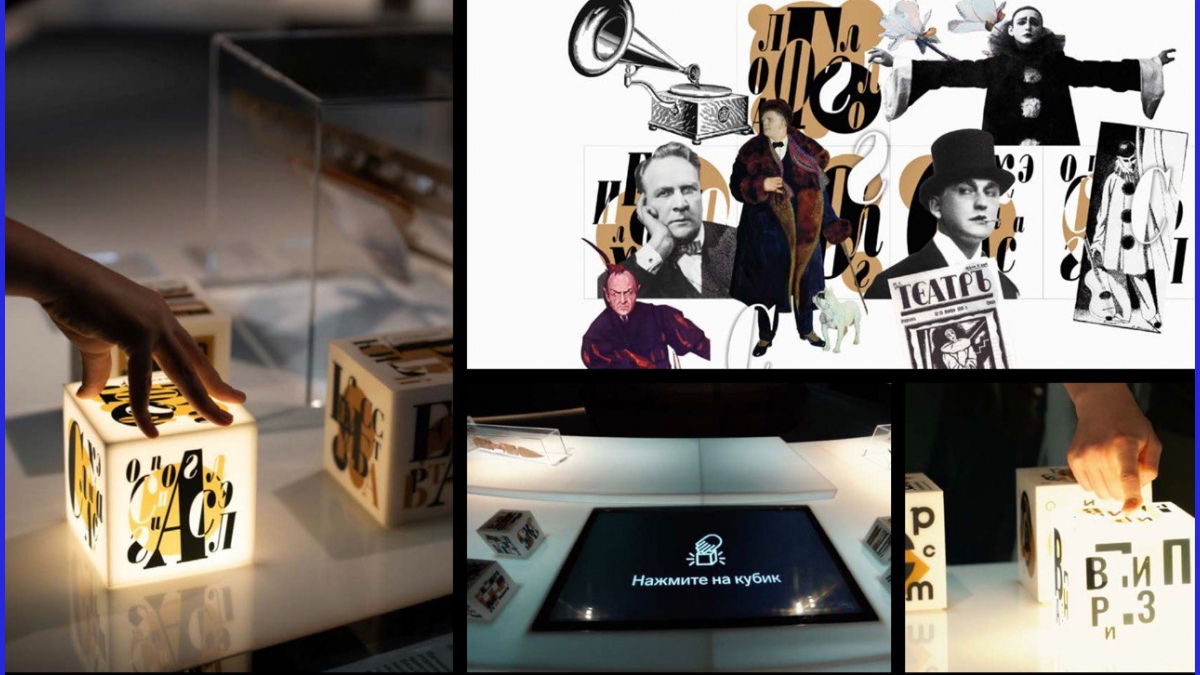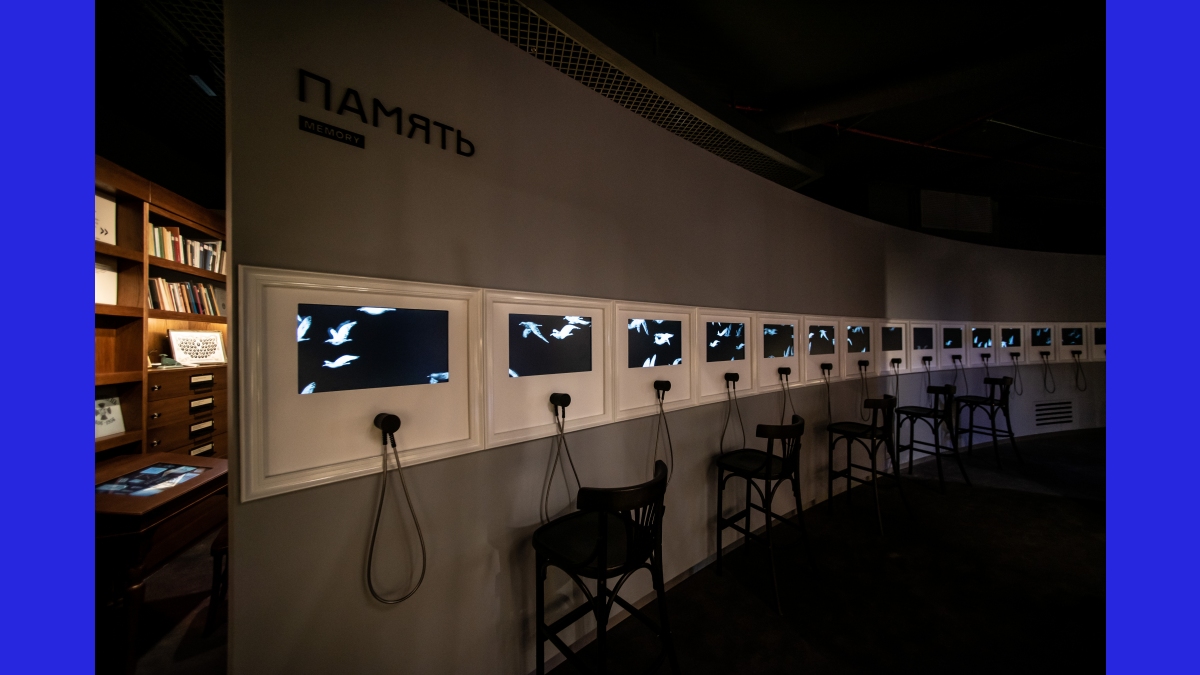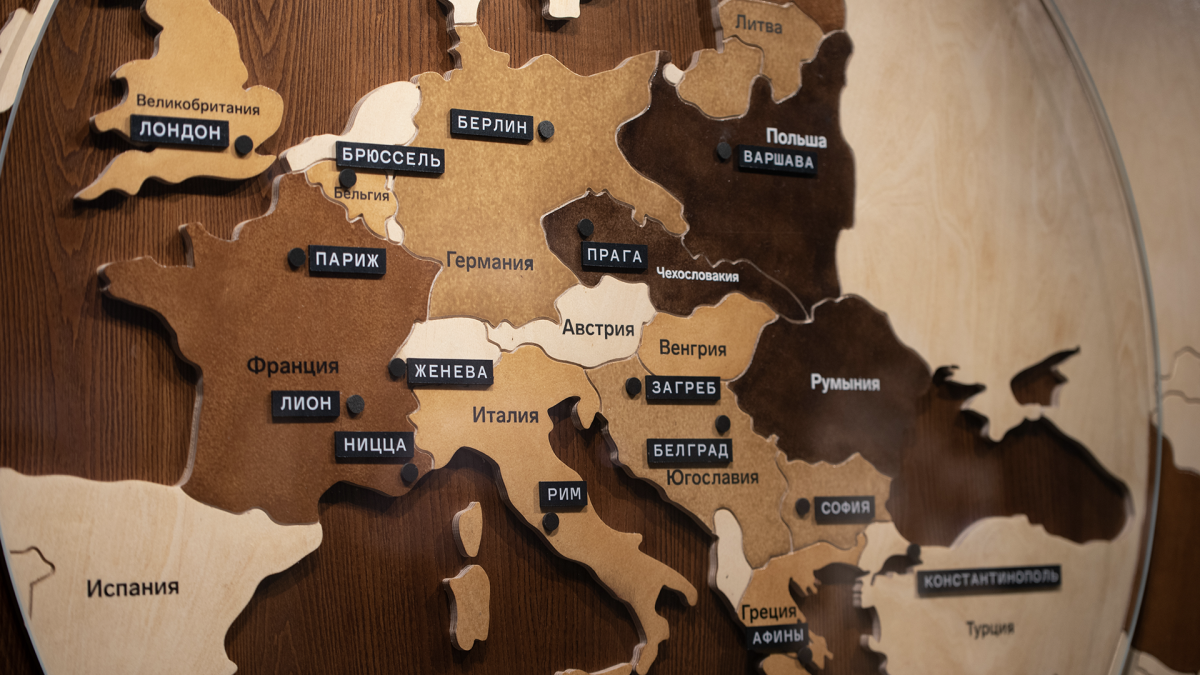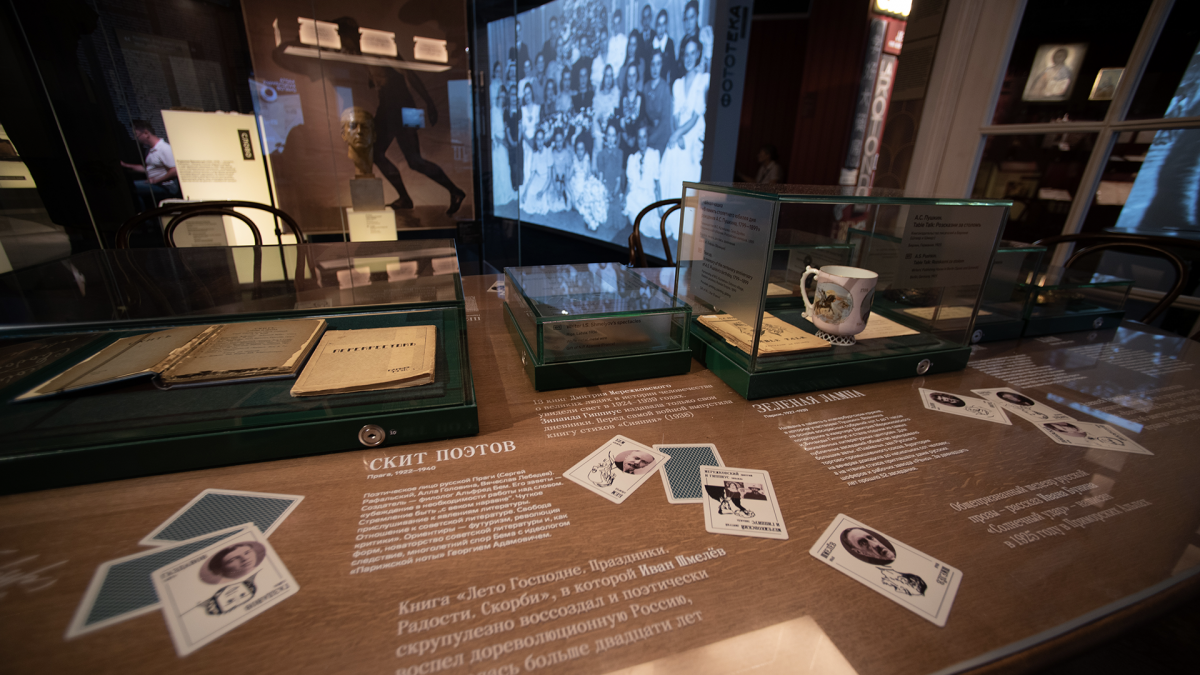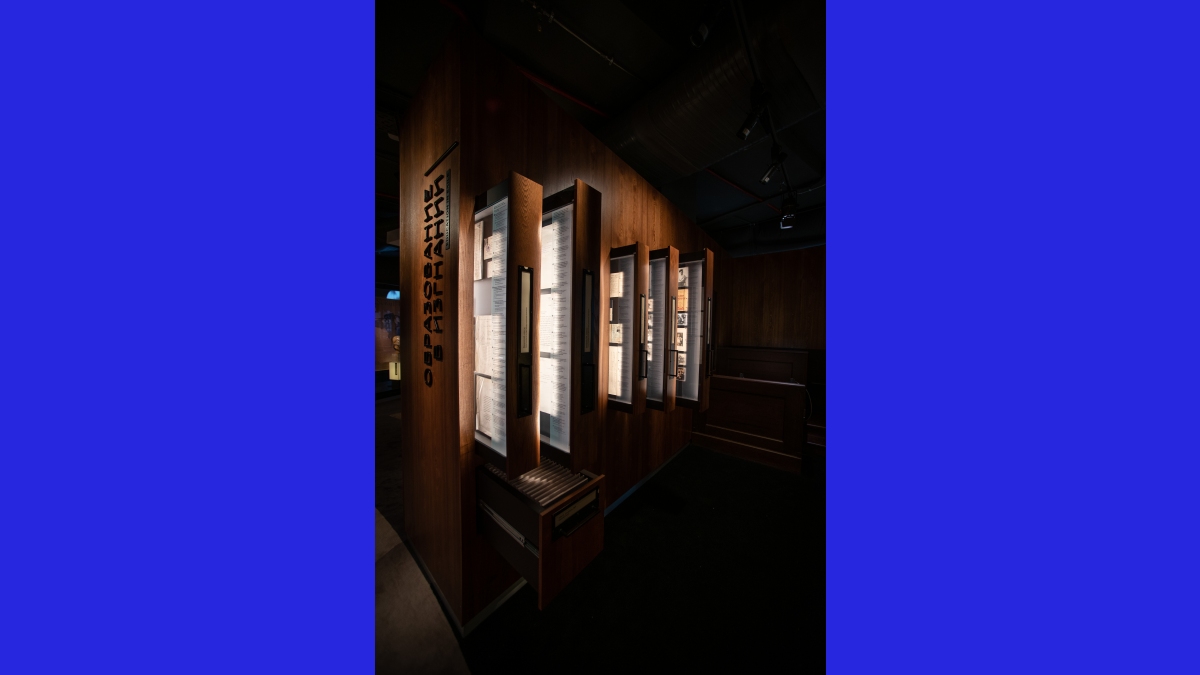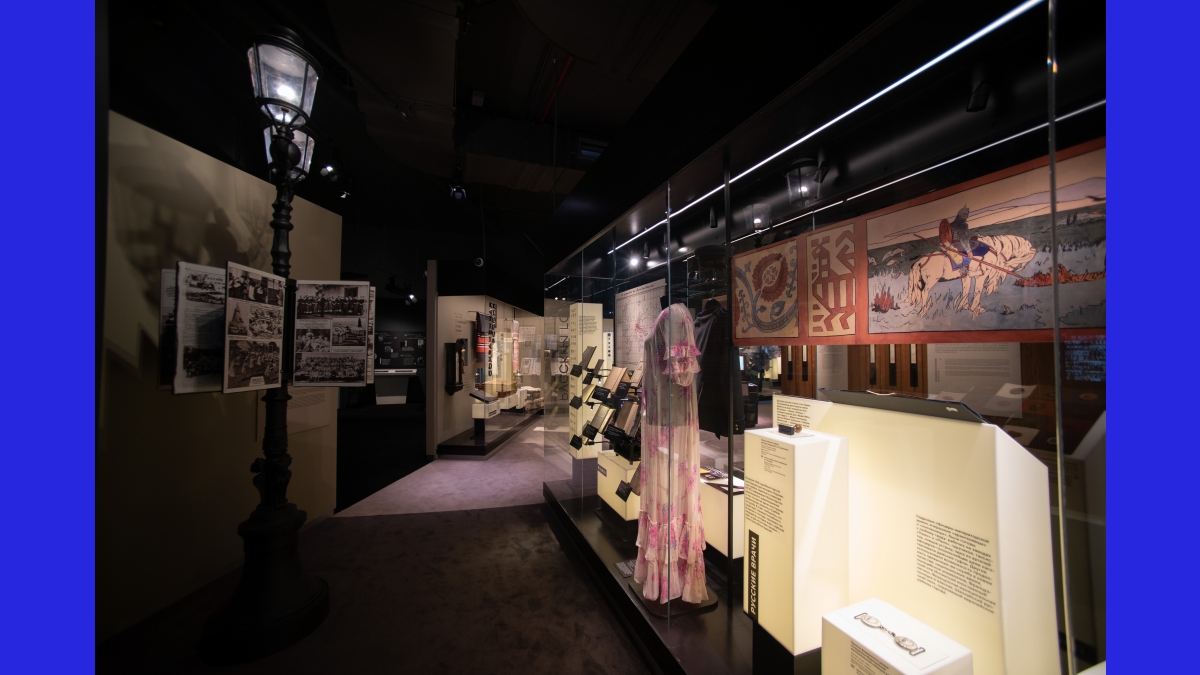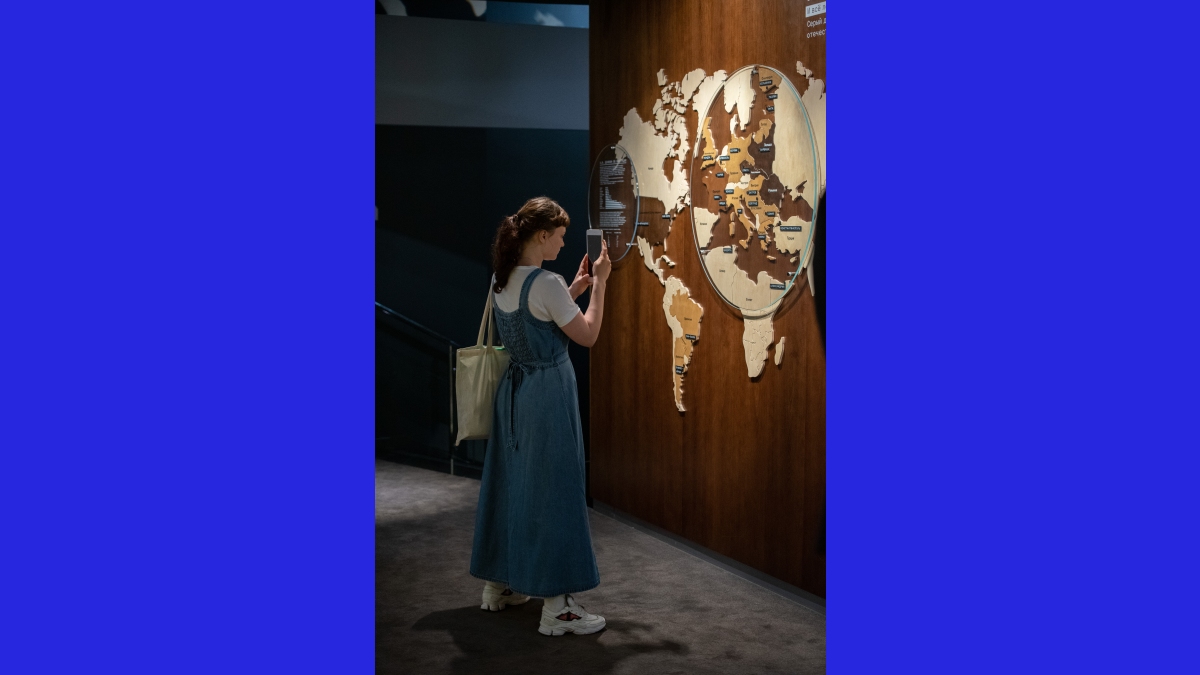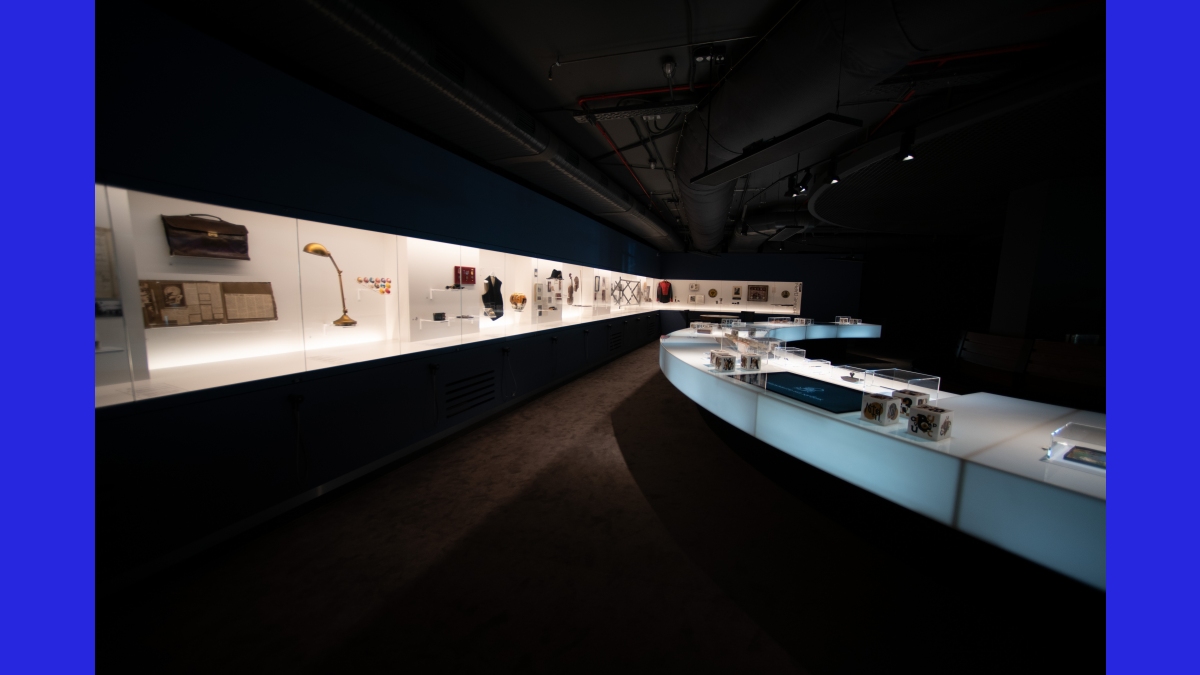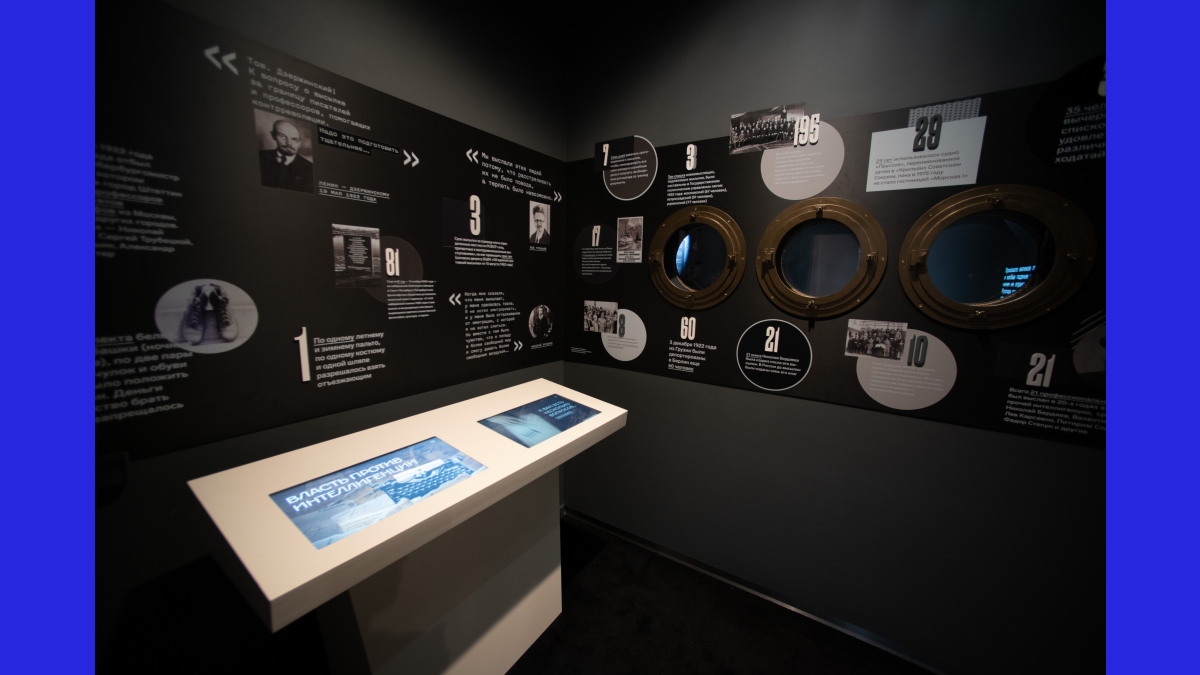The State Museum of Russian Diaspora in Moscow
Based on the Museum's scientific concept and historical materials, create multimedia, graphic and interactive content, as well as to carry out commissioning of multimedia installations equipment for a large-scale exhibition that reflects on the themes of emigration and fate of Russian culture and people abroad.
The Alexander Solzhenitsyn House of Russia Abroad is a cultural institution that for over 20 years served as a Russian expatriate community cultural and scientific center, leading an active educational activity. The idea of creating a Museum of Russian Diaspora on its basis has matured for a long time, but was embodied only now. On may 28, 2019, the new museum was opened with the participation of Sergey Lavrov, the Russia's Minister of Foreign Affairs, Alexander Kibovsky, Moscow's Minister of Culture and a number of other high ranked officials. The President of the Russian Federation Vladimir Putin sent a welcome telegram.
One of the world's leading companies in museum exhibition and planning acted as the Museum architect and its concept creator, focusing on spatial solutions and scenography of the exhibition. We worked closely with the design team and the staff of the House of Russia Abroad.
Our work on the project took about a year. Pitch has taken on a wide range of tasks related to the development of comprehensive stylistic and design solutions and the creation of graphic, interactive, video and audio contents for numerous installations. In total, we have created 18 unique interactive installations and applications for the Museum, 6 films for projections and screens, 14 audio pieces, developed more than 30 graphic elements of the interior (from explications to wall prints and collages) and the entire labeling system. Our editors and translators have adapted and reworked a huge amount of text material for localization into other languages. One of the most important aspects of this project was careful and painstaking attitude to the materials received from the curators and the scientific group, as well as work with the archives, funds and extensive collection of the House of Russia Abroad, that served as the basis for multimedia content creation. Among the key installations of the new Museum there are:
'Russians in the World', which is the most notable installation of the 1st floor of the Museum. This is a large semi-circular projection on the wall with the total length of 17 meters that is showing a map of the world. Opposite it there are 5 touch panels from which video interviews of people from different countries at the choice of the user are being launched. Directional sound systems are installed above the panels. The technical complexity of this installation was determined by the technical solution in which all the projectors are controlled by a separate media server, and the sound was launched from the players controlled by the touch panels. Our engineers and programmers have developed a custom solution for this difficult task, achieving the perfect synchronization of video and audio files.
The installation 'Heart of the Exposition' also deserves special attention. Here the main difficulty was in different approaches of the content demonstration. According to the prescribed automation scenario, the first 5 video projectors with a seamless projection on a 16 meters long wall are launched. Then the image smoothly moves to the second wall with a length of 4 meters. At the end of the scenario program, the video appears on 17 screens that are mounted on the 17-meter long wall. All audiovisual content is synchronized with dynamic interior lighting of the hall.
One of the most spectacular installations of the 1st floor is the 'Message'. It is a huge table with 6 integrated 43" panels. All of them are connected to the GPIO interface with 6 physical buttons in the shape of cubes with built-in lighting. Each button launches its own unique thematic section of the html interface, for example: Russian ballet, technological inventions, literature, cinema etc. It is dedicated to our compatriots' contribution to the world's culture and science.
An interactive questionnaire 'A few questions to you' on the 2nd floor is also drawing public interest. By answering its questions, visitors can learn about their possible fate in the years of expulsion of the intelligentsia and the fate of real people who were forced to leave their Homeland.
An interactive panel 'Refugee and military camps' tells about the hardships of the way to exile and the conditions in which the internally displaced persons lived. For it, we made a few video screensavers, which are launched from the timeline that is stylized as a ship telegraph. In addition, here one can get acquainted with the memories of people and photos of those places.
"Russian schools" is an interactive panel about outstanding teachers and graduates of Russian schools, gymnasiums and universities abroad. In addition to the appealing design, we have created 6 cartoons in the style of collage animation that tell stories about most prominent students of these schools and their future life.
In the process of work we often had to adapt the original concepts, make different content and design decisions and work fast. In this way came the idea to shoot 30 interviews with compatriots on the topic of emigration and Russian culture abroad. Within few days we have found participants via open call in social networks, have prepared for shooting in a rented chromakey pavilion and filmed the interviews and then edited the videos.
Audio installations and sound design were also executed with a great care: from creating a medley of classic songs to reconstruction of 1920s' soundscapes of cities — centres of Russian emigration from Paris to Harbin, or making a narrative out of diaries of navy captain Semyon Chetverikov, we immersed the audience in a discussion about the fate of the Motherland's prominent philosophers of the time.
There are far too many people we would like to thank and mention on this project. The result of the joint work of such a large number of people is a unique exhibition space, filled with the most bespoke multimedia solutions, that opened in the heart of Moscow, at Taganka. We are sure that it will become a center of attraction not only for the foreign Russian diaspora, but also for our compatriots: according to the Moscow Department of Culture numbers, the new museum will receive about 100,000 visitors a year.

